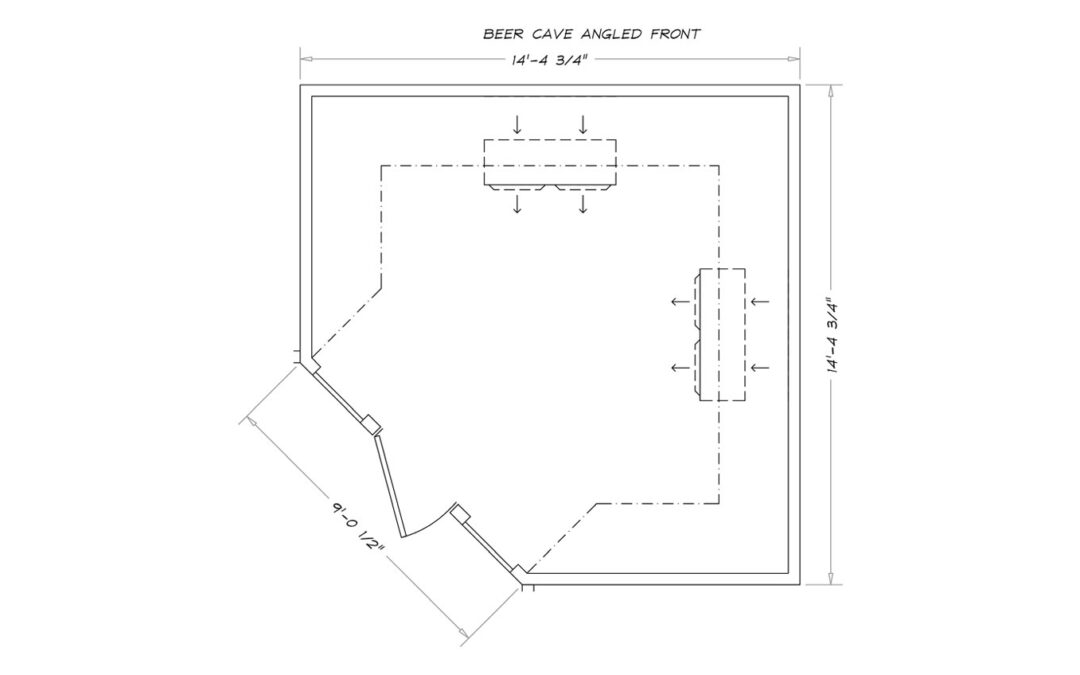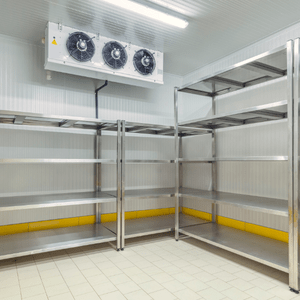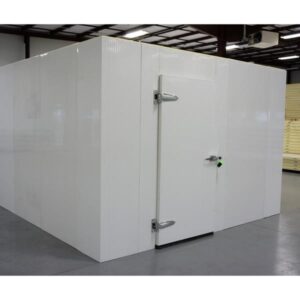Efficient storage and temperature regulation are critical components of any successful foodservice operation. Within this realm, walk-in coolers emerge as indispensable assets, offering the capacity to preserve perishable ingredients, beverages, and supplies for extended periods. Yet, selecting the optimal walk-in cooler size for your establishment is far from a trivial decision. It requires balancing spatial limitations, operational demands, and financial considerations, all while optimizing storage efficiency.
This guide provides a meticulous overview of the available sizes for commercial walk-in coolers. Whether you operate a compact café, a mid-sized restaurant, or a large-scale catering enterprise, this insight will assist you in making an informed decision tailored to your needs.
Understanding Standard Walk-In Cooler Sizes
Commercial walk-in coolers are available in a variety of sizes, each designed to cater to different scales of business operations. While the dimensions may often depend on specific manufacturers or customization services, most exist within a well-defined range.
Typical Dimensions
For the majority of small to medium-sized operations, standard walk-in coolers range between 64 square feet (8 ft x 8 ft) and 144 square feet (12 ft x 12 ft). These dimensions commonly serve establishments such as:
- Small cafés requiring storage for fresh produce, bottled beverages, and pastries.
- Casual dining establishments dealing with moderate inventory levels.
- Family-owned catering services seeking to preserve ingredients for 2-3 events at a time.
Compact walk-in coolers of this size already achieve high storage efficiency and can often fit easily within urban kitchen layouts, where space comes at a premium.
Customizable Sizes for Large Operations
However, businesses managing expansive menus or storing bulk supplies often necessitate larger coolers. Custom-made walk-in coolers, extending well beyond 200 square feet, fulfill the demands of:
- High-volume restaurants running extensive daily operations.
- Suppliers maintaining a supply chain for multiple foodservice clients.
- Warehouses preserving bulk quantities of specific items, including meats or beverages.
While custom dimensions may come with associated costs, they also promise maximized utility in aiding distribution chains or accommodating seasonal spikes in inventory.
Key Factors to Consider When Choosing the Right Size
Selecting the most appropriate walk-in cooler size is not exclusively about fitting the operational needs of the moment. The decision is one of forward-thinking planning, accommodating both current demand and potential business growth. Key considerations include:
1. Operational Scale
The nature and scale of your business operations significantly impact the required walk-in cooler capacity. For example:
- Small businesses like coffee shops or sandwich bars may function efficiently with an 8 ft x 8 ft unit.
- Mid-sized restaurants managing moderately extensive menus often opt for units in the range of 10 ft x 10 ft to 12 ft x 12 ft.
- Large-scale kitchens, warehouses, or caterers often require sizes beyond the standard dimensions to meet high storage demands.
2. Product Load and Usage Frequency
A cooler’s storage capacity depends heavily on the volume of perishable goods your establishment handles daily. For example:
- A bakery regularly processing heavy dough batches and fresh dairy may require significant cubic footage even if operating on a small scale.
- Conversely, a bar specializing in bottled beers and canned sodas may have lesser dimensional requirements due to the stackable nature of their products.
3. Space Availability and Installation
Before committing to purchasing a walk-in cooler, the dimensions of your designated space must be measured meticulously. Look for factors such as:
- Doorway widths that may restrict cooler placement.
- Ceiling heights critical to vertical storage solutions.
- The necessity to maintain adjacent utilities like drains or electrical outlets.
For businesses in densely populated areas or structured kitchens, prefabrication services may offer tailored solutions ensuring maximum cubic utilization within restricted spaces.
4. Climate and Insulation Needs
Cooler sizes do not exist in isolation. Additional capability might be necessary if the equipment is exposed to abnormally high external temperatures, such as supply rooms abutting furnace-like kitchen environments.
Similarly, coolers equipped with advanced insulation materials may reduce overall bulk while preserving interior capacity. Proper assessment ensures long-term operational efficiency and reduced electric expenditures.
Benefits of Tailored Walk-In Cooler Sizing
Customizing a walk-in cooler according to exact spatial, operational, and efficiency needs yields several decisive benefits.
Maximized Inventory Management
An appropriately sized unit prevents frequent repetition of stock replenishment cycles, saving time and operational costs. It also combats spoilage due to overcrowding, where air circulation is restricted and perishable goods spend uneven durations in lower-temperature zones.
Enhanced Space Utilization
Large units in undersized spaces may result in layout inefficiencies, sacrificing functionality in other workflows like food preparation or cleaning. Conversely, compact compartments may limit the ability to introduce variety into a menu or accommodate seasonal promotions.
Energy Efficiency
Underutilizing an oversized unit often results in higher power consumption when compared with an optimally-sized counterpart. A unit designed strictly to match specific inventory levels ensures energy expenditure aligns with actual storage demand, reducing utility bills while promoting eco-conscious business practices.
Longevity and Maintenance
Operational strain adversely impacts equipment longevity. Walk-in coolers with adequate space distribution experience balanced wear and tear, reducing the frequency of maintenance or warranty claims.
Choosing the Ideal Walk-In Cooler for Your Needs
When considering a walk-in cooler, involving an expert to assist in determining exact specifications is invaluable. Professionals not only suggest optimal-sized units but also assess operational factors such as cooling load requirements and ongoing maintenance needs.
Reputable walk-in cooler providers often deliver configurable options, combining the advantages of standard sizes with modular flexibility to meet your needs. They help bridge the gap between immediate functionality and scalability as your business grows.
Final Thoughts – Efficiency is Key
Selecting the right size for a commercial walk-in cooler profoundly impacts the efficiency, productivity, and profitability of your establishment. One that is too small can lead to crammed shelves, wasted inventory, and repeated ordering, while one that’s too large may unnecessarily spike energy usage and upfront costs.
To ensure your business invests in a perfectly tailored solution, work with experienced providers offering expertise and customizable options, ensuring that your unit aligns with both your immediate storage needs and long-term growth objectives.
Looking to upgrade your establishment’s storage capabilities? Contact us today for a personalized consultation to find the perfect walk-in cooler for your space.



